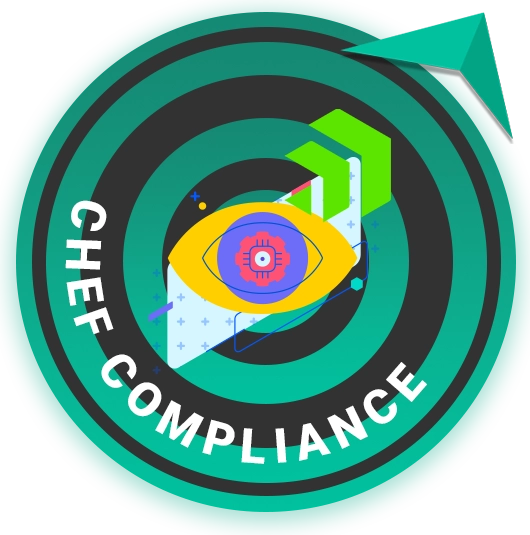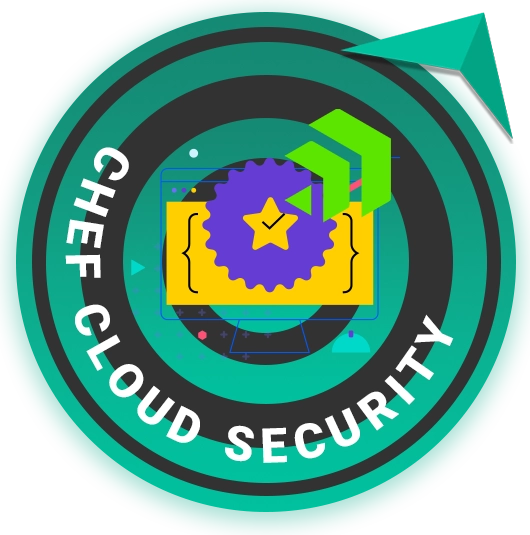CHEF APP DELIVERY ULTIMATE GUIDE
Tool Review & Analysis
Cleared Workforce is a specialty search firm focused on security-cleared Talent Recruitment for Government Contractors.
100+
product reviews of trending tech
100+
tech written guides for users
100+
tech tools in our tool database

CHEF APP DELIVERY
Chef App Delivery is an automation platform designed to improve the application deployment process, making it faster, more consistent, and repeatable across different environments. It enables teams to define infrastructure and application delivery as code, integrating seamlessly with various environments and toolchains to streamline the path from development to production.
Section 1
Installation & Setup
Installing and setting up Chef App Delivery involves a series of steps to prepare your environment for application automation. Proper installation and configuration ensure that your applications can be deployed and managed efficiently across different environments.
To begin the installation of Chef App Delivery, download the latest version from the Chef official website. Ensure that your system meets the necessary prerequisites, such as having the right version of Ruby installed and network access to your Chef Infra Server.
Install Chef Workstation on your local machine, which provides the necessary tools and utilities for interacting with Chef App Delivery. Installation methods vary based on your operating system but generally involve downloading the installer package and executing it on your system.
Verify the installation by running chef -v in your terminal. This command should return the versions of Chef Workstation and its components, confirming that the installation was successful.
Begin the configuration process by setting up your knife.rb file within your Chef Workstation. This configuration file contains essential details about your Chef server, including the server’s URL, your client key, and your organization’s validator key.
Use the knife command to download and configure starter kit from your Chef Infra Server. This starter kit includes the necessary configuration files and keys to start working with Chef App Delivery.
Validate your setup by ensuring that your workstation can communicate with the Chef Infra Server and execute basic commands, such as listing nodes with knife node list.
Issues often arise from misconfigurations in the knife.rb file. Double-check that all paths and URLs are correctly specified and that the keys have the right permissions.
Network problems can prevent your workstation from communicating with the Chef Infra Server. Ensure there are no firewall or network policy issues interfering with the connection.
If you encounter SSL errors, use the knife ssl fetch and knife ssl check commands to verify and fix any SSL certificate issues between your workstation and the Chef Infra Server.
Section 2
Features and Capabilities
Chef App Delivery is designed to automate the application deployment process, integrating with various environments and ensuring consistent application states. Its features and capabilities streamline the application lifecycle from development to production.
Chef App Delivery utilizes Infrastructure as Code (IaC) principles, allowing you to define application and infrastructure configurations in code form. This approach ensures consistency and repeatability across different environments.
The tool integrates seamlessly with version control systems like Git, enabling continuous integration and continuous deployment (CI/CD) workflows. Changes pushed to your repositories can automatically trigger application builds and deployments.
Chef App Delivery supports multiple environments and configurations, enabling you to manage staging, production, and other environments separately but within the same framework.
Continuous Deployment: Chef App Delivery excels in scenarios where applications need to be deployed repeatedly across various environments, maintaining consistency and speed.
Configuration Management: It is also used for managing and applying configuration changes across multiple servers, ensuring all systems are compliant and up to date.
Application Scaling: The tool can manage and automate the scaling of applications, adjusting resources as needed based on predefined rules and metrics.
Learning Curve: The complexity and breadth of features can be daunting for new users. A solid understanding of Chef and DevOps principles is required to fully leverage the tool.
Environment Specificity: Some features may not be compatible with all environments or require additional setup for non-standard configurations.
Dependency Management: Users must carefully manage dependencies and versions within their cookbooks and configurations to avoid conflicts.
Section 3
Advanced Usage and Techniques
Beyond basic deployment and configuration, Chef App Delivery offers advanced features for more sophisticated application management and automation strategies, enabling users to optimize their DevOps workflows.
Leverage the full suite of Chef’s testing tools like Test Kitchen, InSpec, and ChefSpec to automate testing of your infrastructure and application code, ensuring high reliability and compliance with your standards.
Utilize Policyfiles to manage and lock down your application and environment configurations, providing a clear, versioned roadmap of your infrastructure and application states.
Maintain clean and well-documented code for your cookbooks and recipes. This practice aids in collaboration among team members and simplifies troubleshooting and updates.
Implement a robust version control system and establish a branching strategy that fits your team’s workflow, enabling safe and efficient collaboration and development.
Chef App Delivery can integrate with cloud services, container orchestration platforms, and CI/CD pipelines, enhancing automation and consistency across the board.
Utilize hooks and APIs provided by Chef to connect with monitoring tools, notification systems, and security services, to further automate and secure your application delivery pipeline.
Section 4
FAQs
Common questions often arise when users start working with Chef App Delivery. Addressing these frequently asked questions can help clarify how the tool functions and its best use cases.
- How does Chef App Delivery handle multiple environments?
- Chef App Delivery allows for the definition and management of multiple environments, such as development, testing, and production. Each environment can have its own set of configurations and cookbooks, ensuring that changes can be tested thoroughly before being applied to production.
- Can Chef App Delivery deploy applications to cloud environments?
- Yes, Chef App Delivery can deploy applications to various cloud environments. It integrates with major cloud providers and can manage both on-premise and cloud-based resources, providing a consistent deployment process across different infrastructures.
- How does Chef App Delivery integrate with CI/CD pipelines?
- Chef App Delivery can be integrated into CI/CD pipelines through the use of webhooks, API calls, or command-line tools. This allows automated testing, build, and deployment processes, aligning with DevOps practices for continuous integration and continuous delivery.
- What is the role of Policyfiles in Chef App Delivery?
- Policyfiles are used to manage and lock application and environment configurations, ensuring that all system components are compatible and that deployments are repeatable across different environments.
- How can I roll back changes with Chef App Delivery?
- Rollbacks can be managed through version control of cookbooks and configurations. By maintaining a history of changes, users can revert to previous versions if a deployment introduces issues.
- “Chef App Delivery is only for large-scale systems.”
- Chef App Delivery is versatile and can be beneficial for systems of any size. While it provides powerful automation that can handle complex, large-scale environments, it is also suitable for smaller setups or individual projects. Its scalability means it can grow with your infrastructure, making it a valuable tool regardless of your system’s size.
- “Chef App Delivery replaces system administrators.”
- This tool is designed to assist and streamline the work of system administrators, not replace them. It automates repetitive tasks, enforces configuration standards, and aids in deploying applications, allowing system administrators to focus on more strategic tasks and oversight.
- “Chef App Delivery is too complex to learn.”
- While Chef App Delivery does have a learning curve, especially for those new to infrastructure as code and automation tools, it is built to be as intuitive as possible. There is extensive documentation, community support, and training available to help users at all levels become proficient with the tool.
- “Chef App Delivery can only be used in a Chef-exclusive environment.”
- Although designed to work seamlessly within the Chef ecosystem, Chef App Delivery can integrate with various other tools and systems, including cloud services, CI/CD pipelines, and container orchestration platforms. Its flexibility allows it to fit into diverse tech stacks.
- “Using Chef App Delivery means giving up control over your infrastructure.”
- Contrary to this belief, Chef App Delivery provides more control and visibility into your application and infrastructure configurations. By defining your infrastructure as code, you gain the ability to review, version control, and precisely manage every aspect of your environment, enhancing rather than relinquishing control.
Section 5
HELPFUL CHEF COMMANDS
In the context of Chef App Delivery, several command-line utilities are crucial for managing the lifecycle of applications. Understanding these commands can significantly enhance your operational efficiency and deployment speed.
Uploads Policyfiles to the Chef Infra Server, allowing you to apply specific configurations and ensure consistency across environments.
chef push.
.
.
Converts Policyfiles into a format that can be used with Chef Solo, useful for testing environments or scenarios where Chef Infra Server is not available.
chef export.
.
.
Creates a new Chef application skeleton, helping users start with a standardized structure for their application code.
chef generate app.
.
.
.
Creates or updates environments on the Chef Infra Server using a JSON or Ruby file, facilitating environment management.
knife environment from file.
.
.
.
Manages roles within the Chef infrastructure, allowing for the grouping of nodes and assignment of specific run-lists and attributes.
knife role from file.
.
.
.
Creates or updates data bags on the Chef Infra Server, providing a way to store shared data like encryption keys or credentials securely.
knife data bag from file.
.
.
.
Uploads cookbooks, roles, data bags, and environments to the Chef Infra Server, syncing your local changes with the server.
knife upload.
.
.
.
Allows for the execution of commands on multiple nodes managed by Chef, enabling administrators to perform actions or audits across their infrastructure.
knife ssh.
.
.
.
Installs cookbooks from the Chef Supermarket to your local machine, making it easier to manage dependencies and discover new cookbooks.
knife supermarket install.
.
.
.
Executes the Chef client in local mode, allowing users to test cookbooks without connecting to a Chef Infra Server.
chef-client --local-mode.
.
.
.
Section 6
CHEF PRODUCT SUITE
The Chef product suite includes the following tools:
Helps ensure configurations are applied consistently across environments through automation.

CHEF INFRA MANAGEMENT
Automates application delivery to enable consistent and successful application outcomes at scale.

CHEF APP DELIVERY
Maintains compliance and prevents security incidents across different environments while improving efficiency.

CHEF COMPLIANCE
Automates IT resource management to enhance efficiency and reduce risks.

CHEF DESKTOP
Provides access to ready-to-go compliance scanning and remediation content.

CHEF PREMIUM CONTENT
Offers end-to-end cloud security management to maintain compliance and prevent security incidents.

CHEF CLOUD SECURITY
The cybersecurity information provided on this site is strictly for educational use. We hold no responsibility for misuse and urge users to apply these skills ethically, on networks or systems where they have explicit authorization – such as a private home lab.
